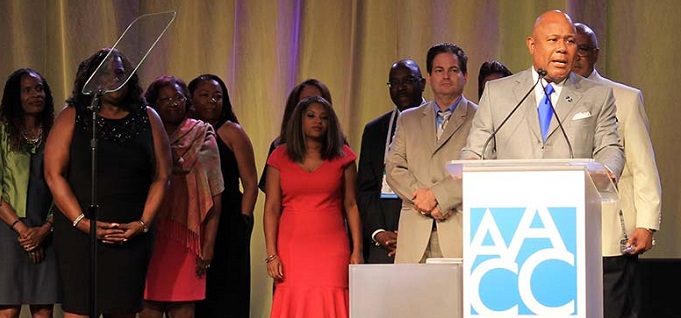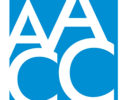Recapping the AACC convention
By AACC 21st Century Center Staff
April 26, 2017
A quick look at some of the highlights of AACC’s convention.
Another AACC Annual Convention has drawn to a close. There was a lot going on at the convention, so here’s a quick recap of some of the highlights:
At the opening session on Saturday, April 22, former second lady Dr. Jill Biden accepted AACC’s Harry S. Truman Award, presented to the administration of President Barack Obama. Community college are all about “the American drive to lift ourselves up,” she said.
The AACC Leadership Award was presented to Rosemary Gillett-Karam, director of the community college leadership doctoral program at Morgan State University in Maryland; Judith Eaton, president of the Council for Higher Education Accreditation (CHEA); and Tony Zeiss, former president of Central Piedmont Community College in North Carolina.
Keynote Speaker Wes Moore urged attendees to stand up for the “the others” — those who are struggling in life but who could gain a foothold on the American dream with a college education.
“When we have conversations about higher education, the definition of who we’re talking about is often lost,” said Moore, a youth advocate, author and military veteran.
On Monday, April 24, five colleges received Awards of Excellence for advancing the student success agenda.
This year’s AACC Awards of Excellence winners are:
- Hillsborough Community College in Florida (Advancing Diversity)
- Edie Carter of Amarillo College in Texas (Faculty Innovation)
- Olympic College in Washington (Corporate/College Partnership)
- Halifax Community College in North Carolina (College Safety and Planning)
- Wallace Community College–Dothan in Alabama (Student Success)
And five former community colleges students were recognized at the Outstanding Alumni Awards at the closing plenary brunch. You can read their profiles here.
Of course, there were hundreds of other sessions focusing on topics such as college readiness, faculty engagement, the skills gap and organizational structure.
At a session focusing on entrepreneurial colleges, attendees learned about design centers. Wayne County Community College District (WCCCD) in Detroit and Lone Star College in Texas are among community colleges that have design centers that provide physical space for collaboration, innovation teams, and dedicated staff and resources that facilitate long-term, holistic change. The Design Center at WCCCD supports leaders’ efforts to redesign and improve programs, services and processes; facilitates dialogue to help the college system anticipate the future and develop innovative responses; and encourages innovation and entrepreneurship through a cross-functional and team-based approach.
Another session looked at a collaboration between four colleges in northeastern Ohio to promote student success. Faculty share curricula, and the colleges are engaged in several regional partnerships, including a collaboration of over 90 employers called RAPID (Regionally Aligned Priorities in Development Skills) and NEOVETS, an organization that connects military families with resources in northeastern Ohio.
There are a lot of different ways colleges and their K-12 partners are working to help students – particularly first-generation and low-income students – become college ready. That was the focus of one session, featuring speakers from several colleges, including California’s Cerritos College and Davidson County Community College in North Carolina.
You can read about more sessions in CC Daily.
What did you learn at the annual convention? Talk about it at LinkedIn.



